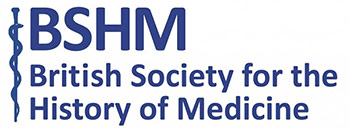This blog is all about the Worshipful Society of Apothecaries and their recent 3-day history of medicine course which ran from 1st-3rdMay. This fascinating course comprised a series of interesting lectures, spanning the history of medicine over two thousand years in Europe and beyond.

Image 1: Worshipful Society of Apothecaries Coat of Arms
The Worshipful Society of Apothecaries is quite simply an historical gem nestled in central London, a stone’s throw from St Paul’s Cathedral. Like many of the other London livery companies, the Society of Apothecaries looks rather unassuming from the street. But, walk into the courtyard, and then through the main entrance up a beautiful seventeenth-century staircase into the court room or parlour, and prepare to be met by gorgeous wood paneling, impressive life-size portraits of various Society benefactors and lots of rhinos – the Society’s emblem for over 400 years! The origins of the Grocers and Apothecaries of London can be traced back to 1180. In 1617, the Apothecaries separated from the Grocers to form the Worshipful Society of Apothecaries of London.

Image 2: The Court Room
The delegates that were attending the course were of varying backgrounds – medical students, practising doctors, pharmacists, historians, nurses, museum curators and those with a general interest in the history of medicine. Such an eclectic group of people made for probing questions and stimulating discussion at the end of each lecture.
The talks during the course covered a broad range of themes and topics – there really was something for everyone! Day one featured art and surgery, the history of the coroner, the founding of voluntary hospitals and disease and medicine in ancient Egypt. Day two brought talks focused on medicine in Scotland and Japan as well as women in medicine and a broad overview of Britain and world medicine. On the final day, we were treated to the history of pharmacy, the history of X-rays and a talk on the archaeological findings from Salisbury Plain as well as a general overview of the history of clinical medicine. All in all, a satisfying and fulfilling course that provided a comprehensive overview of the history of medicine.
Anyone interested in attending the History of Medicine course or applying for the Diploma in the History of Medicine (DHMSA) at the Worshipful Society of Apothecaries should consult the following website for the most up-to-date information:
https://www.apothecaries.org/diploma-in-the-history-of-medicine/

Image 3: Dürer’s Rhinoceros – emblem of the Worshipful Society of Apothecaries
Lucy Havard.



